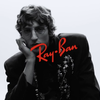{shortcode-9b00a37198047de8f27ed9797e6d6d74d1af2727}
Jacek Smolicki, a Stockholm-based designer, researcher, and artist specializing in immersive environmental soundscapes, is Harvard’s 2026 Loeb/ArtLab fellow. Since 2022, the Loeb Fellowship at the Harvard Graduate School of Design has partnered with the Harvard ArtLab to create the Loeb/ArtLab Fellowship program. Running for one academic year, the fellowship gives working artists the opportunity to explore environmental design at Harvard while making use of the ArtLab studio to develop their own projects.
Smolicki’s work invites its audience to slow down and focus on the unique sensory experience of listening to one’s environment. He attaches microphones to the root systems of trees or submerges the microphones in water, layering music and historical narratives on top of the soundscapes of natural and industrial environments to create unique scenes that capture a specific place and moment in time.
Smolicki characterizes his approach to listening as “transversal.”
“Sound has this depth, thickness; soundscapes are not just immediate, but they have their kind of tentacles that stretch back in time and into the future,” Smolicki said in an interview with The Crimson.
Pieces like “Inaudible Cities” — an ongoing project since 2019 that explores the sounds of every stop along the Stockholm subway — draw the audience’s attention to the sounds we take for granted or barely notice: The low everyday rumble that seeps into our lives, escaping our perception through its constant presence.
Smolicki is bringing this slow, awareness-based approach to Cambridge with two projects currently underway at the ArtLab. His first project explores the soundscape of the Charles River using audio from hydroponic devices submerged in the water.
“My goal is to kind of bring the different sonorities and localities of the river into human awareness by doing a lot of field recordings,” Smolicki said.
Smolicki’s second project in development with the Loeb/ArtLab fellowship is a continuation of The Walking Festival of Sound, a transdisciplinary event co-created by Smolicki that has been running since 2019. The Festival takes place over several days and has taken place in multiple countries — previous sitesinclude Zurich, Newcastle, Seoul, Krakow, and Vancouver. Through seminars, listening sessions, city tours, and guest lectures, the festival aims to enhance local knowledge of the cities it inhabits through the tactile sensory experience of walking and listening for several hours. Smolicki is currently developing a Walking Festival of Sound in Cambridge, which will take place between mid-April and mid-May next year.
“The idea here is to bring people together and create a program of events that take place in public spaces, where we walk and listen in different places, and we bring people who already work with sounds or listening in creative ways, people who already designed some kind of audio walks or sound walks for the cities,” Smolicki said.
The festival brings audiences into Smolicki’s unique artistic practice through interactive performances, conversations, and nature walks. Pieces like “The Lake that Glimmers like Fire” (2021) began with a simple idea and the innate curiosity to follow this idea to its conclusion, using sound as a framing device to explore the larger themes uncovered through research and exploration. Every day on his way to his studio in Stockholm, Smolicki passed the same lake, Trekanten, which was said to be one of the most polluted lakes in Sweden. After discovering this, he wondered what the purest lake was, and discovered it to be Rissajaure in the Swedish Arctic Circle, a 16-hour train ride away. Through a combination of layered recordings and live audio filtered through hydrophones and ultrasound detectors placed in and around the lakes, guided walks around Trekanten, and an essay to be read after the performance, Smolicki invited his audience to explore purity and pollution through the sounds of the Trekanten and Rissajaure lakes.
“It’s like a hybrid dialogue, or some kind of speculative dialogue, between these two lakes, two body entities, very different histories,” Smolicki said.
This intentional, place-based approach to creation carries through the entirety of Smolicki’s body of work. He often returns to the same place several times, recording hours of audio that he condenses into short, five-to-10 minute snippets. This slow, repetitive process, which often takes months to complete, is necessary to give Smolicki a full portrait of the places he captures in his soundscapes. Weaving field recordings, music, historical narratives, and creative writing together in a single scene, Smolicki creates what he calls sound walks.
Audiences don’t have to wait until Smolicki completes his Loeb/ArtLab fellowship to experience one of his sound walk pieces at Harvard. Since 2023, Smolicki has collaborated with the Arnold Arboretum — Harvard’s 281-acre “living museum” of trees — to create “Arboreal Soundscapes.” This interactive experience is described as a “hybrid mode” of listening to trees and their ecosystems. Audiences walk among the diverse array of trees housed at the Arboretum while wearing headphones and carrying audio receivers, listening to a combination of the sounds around them and recordings of other forests and ecosystems from around the world.
“I think my general intention is to make us more aware of how we listen to our world, how we listen to each other as well, and how we can change our attitudes by becoming better listeners,” Smolicki said.
Together, Smolicki’s sound walks, soundscapes, essays, and yearly festivals illustrate the power and potential of listening as a method of engaging with one’s surroundings. Be it live or recorded audio, natural or man-made landscapes, tuning into the sounds around us can shape the way we engage with the world.
Read more in Arts
EESA Strikes a Chord With Second Annual Ethio-Jazz Soiree












